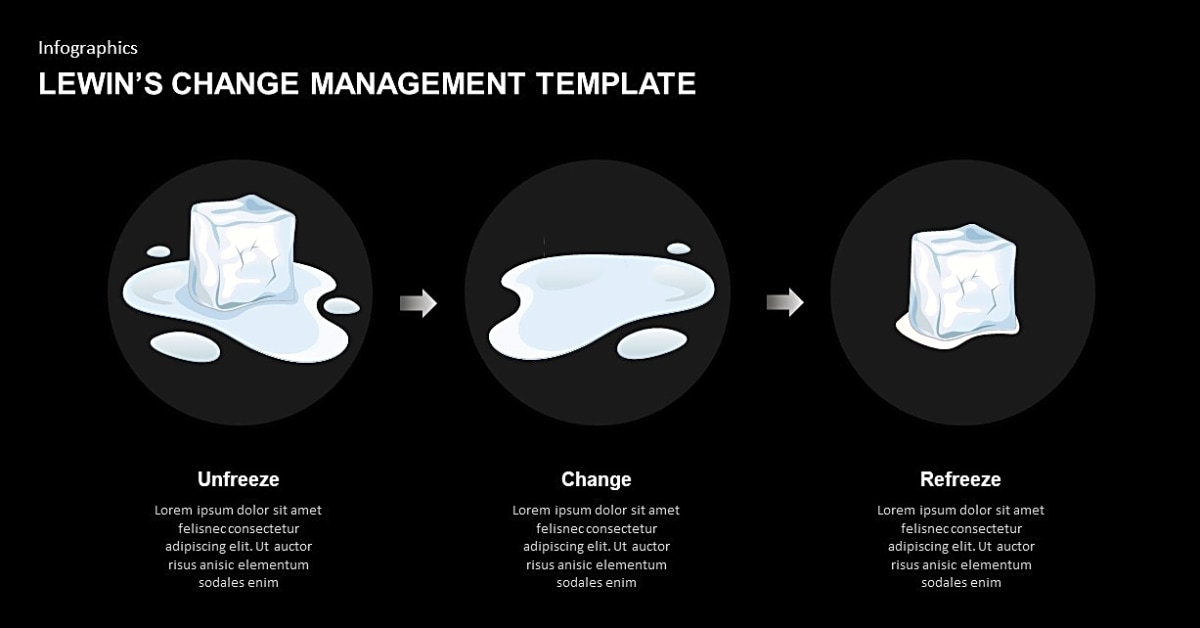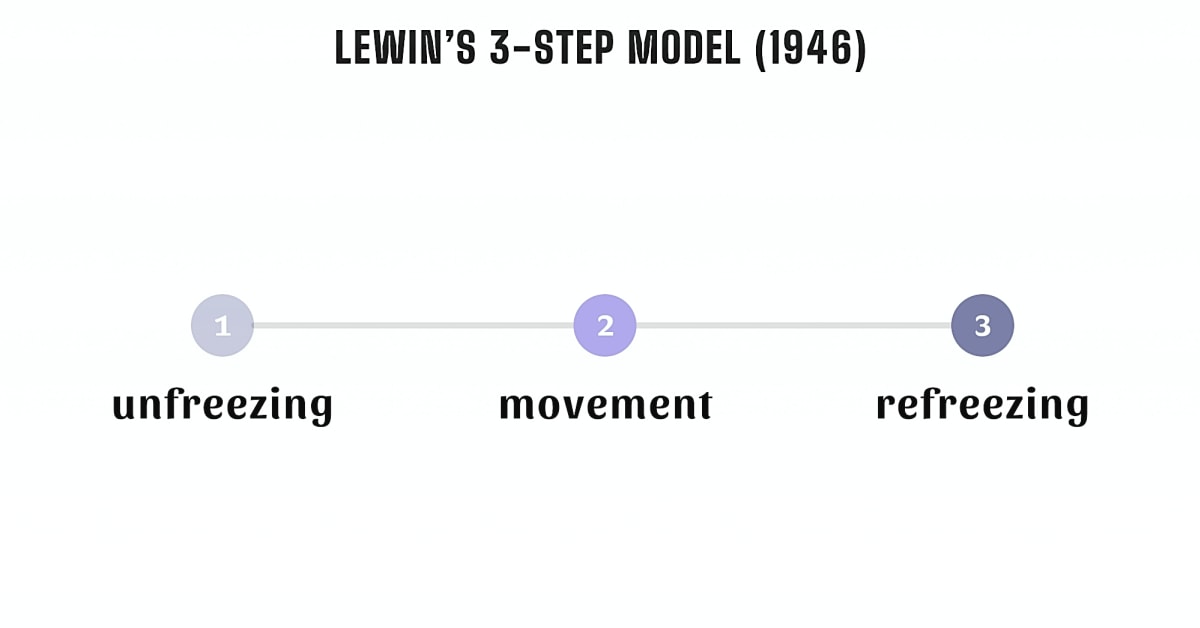Understanding Lewin’s Model for Change Management
Understanding change is a crucial aspect of any successful organization. With the ever-evolving business landscape, it is essential for companies to adapt and embrace change in order to stay competitive. One influential model that has been widely used in change management is Lewin’s Model for Understanding Change. Developed by psychologist Kurt Lewin in the 1940s, this model provides a framework for effectively managing change within an organization. In this article, we will delve into the intricacies of Lewin’s model and its relevance in today’s dynamic business environment. We will explore the three stages of change outlined in the model and how it can be applied to drive successful organizational change. So, let’s take a closer look at Lewin’s Model for Change Management and how it can help your organization navigate through periods of change with ease.
To start off, let’s briefly discuss the background of Lewin’s Model for Change Management. Developed by psychologist Kurt Lewin in the 1940s, this model is based on the idea that change is a three-stage process: unfreezing, changing, and refreezing. During the unfreezing stage, individuals are made aware of the need for change and become open to new ideas. The changing stage involves implementing the actual change, while the refreezing stage focuses on solidifying the change and making it a permanent part of the organization’s culture.
To better understand these stages, let’s use an example of a company that wants to implement a new performance appraisal system. The unfreezing stage would involve discussing the shortcomings of the current system and highlighting the benefits of the proposed change. In the changing stage, the new system would be introduced and employees would be trained on how to use it effectively. Finally, in the refreezing stage, the new system would be fully integrated into the organization’s processes and procedures.
Lewin’s Model also emphasizes the importance of involving all stakeholders in the change process. This includes employees at all levels of the organization, as well as external partners and clients. By involving everyone in the process, it increases buy-in and promotes a smoother transition.
In addition to the three stages, Lewin’s Model also emphasizes the importance of leadership during change. Effective leaders are able to communicate the need for change, motivate employees, and provide support throughout the process. They also play a crucial role in managing any resistance to change and ensuring that the change is successfully implemented.
Now that we have covered the basics of Lewin’s Model, let’s take a closer look at its key components. These include:
- Driving forces: These are factors that push individuals towards change, such as new technology or market trends.
- Restraining forces: These are factors that hinder change, such as resistance from employees or lack of resources.
- Change agents: These are individuals or groups responsible for initiating and implementing the change.
- Change targets: These are the individuals or groups that will be directly impacted by the change.
It is important to identify and analyze these components before implementing any change in order to understand potential challenges and develop strategies to overcome them.
Lewin’s Model has been widely used in various industries and has proven to be effective in managing and leading organizational change. However, it is important to note that every organization is unique and may require some adaptation of the model to suit their specific needs.
In conclusion, Lewin’s Model for Change Management offers a structured approach to navigating and leading organizational change. By understanding its key components and stages, as well as the importance of effective leadership, organizations can successfully implement and monitor change in a way that promotes growth and development.
Involving All Stakeholders
When it comes to implementing change within an organization, one of the key factors for success is involving all stakeholders in the process. This includes employees, management, and even external partners or clients.
By involving all stakeholders, you are not only gaining their support and buy-in for the change, but also their valuable insights and perspectives. This can lead to a smoother transition as everyone feels heard and included in the decision-making process.
Additionally, involving all stakeholders can also help identify potential roadblocks or challenges that may arise during the change process. By addressing these concerns and finding solutions together, you can prevent any major setbacks and keep the change on track.
Overall, involving all stakeholders in the change process can greatly benefit the success of implementing Lewin’s Model for Change Management. It promotes collaboration, communication, and a sense of ownership among all parties involved.
Key Components of Lewin’s Model
Get a deeper understanding of the driving forces, restraining forces, change agents, and change targets in Lewin’s Model.
The driving forces in Lewin’s Model refer to the factors that push for change within an organization. These can include internal or external pressures, such as new market trends or outdated processes. On the other hand, restraining forces are the factors that resist change and can hinder the progress of implementing new strategies. These can include employee resistance, lack of resources, or fear of the unknown.
Change agents play a crucial role in Lewin’s Model as they are the individuals or teams responsible for initiating and leading the change process. They can be leaders, managers, or external consultants who have the necessary skills and knowledge to guide the organization through the change. Lastly, change targets are the specific areas or departments that will be affected by the change. It is important to identify these targets and involve them in the change process to ensure a successful implementation.
Adapting the Model to Your Organization
One of the greatest strengths of Lewin’s Model for Change Management is its adaptability. This model can be tailored to suit the specific needs and challenges of your organization, making it a highly effective tool for implementing change. By understanding how to customize the model, you can ensure that the change process is successful and sustainable in your organization.
To begin adapting Lewin’s Model, it is important to first identify the current state of your organization and the desired state you wish to achieve through the change. This will help determine which techniques and strategies from the model will be most effective in achieving your goals.
Next, consider the unique culture, values, and structure of your organization. What may work for one company may not work for another. It is important to understand your organization’s specific needs and challenges in order to effectively implement change using Lewin’s Model.
Additionally, don’t be afraid to modify or combine different aspects of the model to fit your organization’s needs. The beauty of Lewin’s Model is that it is not a one-size-fits-all approach. It allows for flexibility and customization, making it a valuable tool for any organization undergoing change.
Finally, remember to continuously monitor and evaluate the progress of your change initiative. This will help you identify any areas that may need further adaptation or adjustment in order to ensure success.
The Three Stages of Change
Lewin’s Model for Change Management is a powerful tool for navigating and leading organizational change. It provides a structured approach to managing change and offers valuable insights into the different processes involved. At its core, Lewin’s Model consists of three stages: unfreezing, changing, and refreezing. These stages represent the necessary steps that must be taken in order to successfully implement and sustain change within an organization.
Unfreezing: This first stage involves preparing the organization for change by creating awareness and understanding of the need for change. This often requires breaking down existing mindsets and behaviors that may be resistant to change. It also involves identifying the driving forces for change and reducing any restraining forces that may hinder progress.
Changing: Once the organization has been unfrozen, the next stage is to implement the desired changes. This may involve introducing new processes, structures, or systems. The key is to ensure that these changes are effectively communicated and understood by all members of the organization. It is also important to provide support and resources to facilitate the transition.
Refreezing: The final stage of Lewin’s Model is to solidify the changes and make them a permanent part of the organization. This involves reinforcing new behaviors and practices, and ensuring that they become the norm. It may also involve making adjustments as needed to ensure that the changes are sustainable in the long term.
Lewin’s Model can be applied in a variety of real-world scenarios, from implementing new technology to restructuring a company. By following these three stages, organizations can effectively manage change and increase their chances of success. It is important to note that change is an ongoing process, and organizations must be prepared to adapt and evolve as needed. With Lewin’s Model as a guide, organizations can navigate change with confidence and achieve their desired outcomes.
Key Components of Lewin’s Model
Lewin’s Model for Change Management is a powerful tool for navigating and leading organizational change. At its core, this model is based on the idea that change occurs through a balance of driving forces and restraining forces. Understanding these forces is crucial for successful change management.
Driving Forces
Driving forces are the factors that push an organization towards change. These can include external factors such as market trends or internal factors such as new leadership or changes in company culture. Identifying and leveraging these driving forces is essential for initiating and sustaining change.
Restraining Forces
On the other hand, restraining forces are the factors that hinder or resist change. These can include employee resistance, lack of resources, or organizational structure. Understanding these restraining forces is important for developing strategies to overcome them and move towards successful change.
Change Agents
In Lewin’s Model, change agents are the individuals or groups responsible for implementing and managing change. These can be leaders, managers, or even employees who are trained and empowered to drive change within the organization. They play a critical role in identifying and addressing driving and restraining forces.
Change Targets
The final component of Lewin’s Model is the change targets, also known as the individuals or groups who are directly affected by the change. These can include employees, customers, or other stakeholders. Understanding their needs and concerns is crucial for successful implementation of change.
Key Components of Lewin’s Model
Lewin’s Model for Change Management is a powerful tool for navigating and leading organizational change. To truly understand this model, it is important to grasp its key components.
The first component of Lewin’s Model is the driving forces. These are the factors that push for change and create a sense of urgency within an organization. They can include external factors such as competition or internal factors such as outdated processes.
The second component is the restraining forces. These are the factors that hinder or resist change. They can include fear of the unknown, lack of resources, or resistance from employees.
Next, we have the change agents. These are the individuals or groups responsible for initiating and implementing change. They can be leaders, managers, or consultants.
Lastly, we have the change targets. These are the individuals or groups who will be directly impacted by the change. They can include employees, customers, or stakeholders.
By understanding these key components, you can better identify and address the different forces at play in a change management situation. This will help you effectively plan and implement change using Lewin’s Model.
Change is inevitable in any organization, and Lewin’s Model for Change Management provides a valuable framework for effectively managing and leading change. By understanding the model’s key components and stages, as well as the importance of involving all stakeholders and effective leadership, organizations can navigate and implement change in a way that promotes growth and success.


